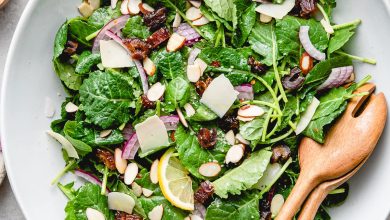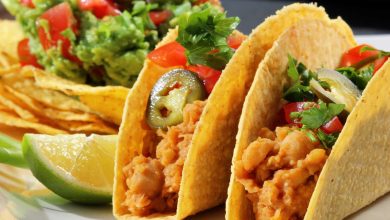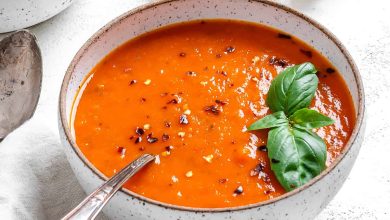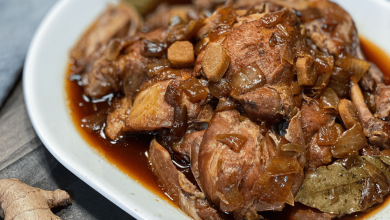PICO DE GALLO
Pico de Gallo, also known as salsa fresca or salsa cruda, is a popular Mexican condiment that’s known for its fresh and vibrant flavors. It’s a type of salsa that’s made from a combination of diced tomatoes, onions, cilantro, jalapeño or serrano peppers, lime juice, and salt. This condiment is typically used as a topping or garnish for various Mexican dishes, such as tacos, nachos, burritos, and grilled meats.
History:
The exact origin of pico de gallo is a subject of debate, but it is widely believed to have originated in Mexico, where it has been a staple in Mexican cuisine for generations. The name “pico de gallo” translates to “rooster’s beak” in Spanish, and there are a few theories about how it got this name. Some say it’s because people traditionally ate it with their fingers, pinching small amounts between their thumb and forefinger, resembling a rooster’s beak. Others believe it’s because the spicy ingredients in the salsa are said to resemble the pecking of a rooster.
Components:
The basic components of pico de gallo include:
-
Diced Tomatoes: Fresh, ripe tomatoes are essential for a good pico de gallo. Roma tomatoes are a popular choice due to their firm texture and sweet-tart flavor.
-
Onion: White or red onions are commonly used. They provide a sharp and slightly sweet contrast to the tomatoes.
-
Cilantro: Fresh cilantro leaves add a fresh, citrusy flavor and aroma to the salsa.
-
Jalapeño or Serrano Peppers: These are used to add heat to the salsa. The choice between jalapeño or serrano peppers depends on your preference for spiciness.
-
Lime Juice: Freshly squeezed lime juice is added for a tangy and citrusy kick.
-
Salt: Salt enhances the overall flavor of the salsa.
Steps to Prepare Pico de Gallo:
Here’s a step-by-step guide to preparing pico de gallo:
-
Prepare the Ingredients: Wash and dice the tomatoes, finely chop the onions, remove the seeds and membranes from the peppers (if you want it less spicy), and chop them finely. Also, chop the fresh cilantro leaves.
-
Combine Ingredients: In a bowl, combine the diced tomatoes, chopped onions, cilantro, and chopped peppers.
-
Add Lime Juice and Salt: Squeeze fresh lime juice over the mixture. Start with the juice of one lime and add more to taste. Sprinkle salt over the mixture as well.
-
Mix Thoroughly: Gently toss all the ingredients together until well combined. Be careful not to overmix; you want to maintain the fresh texture of the ingredients.
-
Chill: Cover the bowl with plastic wrap or a lid and refrigerate the pico de gallo for at least 30 minutes to allow the flavors to meld.
-
Serve: Pico de gallo is best served fresh. Use it as a topping or garnish for your favorite Mexican dishes.
Preparation Time:
The preparation time for pico de gallo is relatively short, usually taking around 15-20 minutes. However, allowing it to chill in the refrigerator for at least 30 minutes before serving enhances the flavors, so you may want to factor in that time as well.
Enjoy your homemade pico de gallo as a delicious and refreshing addition to your meals!
Pico de Gallo is a low-calorie, nutritious condiment known for its fresh ingredients. Here are the approximate nutrition facts for a typical serving of pico de gallo (about 2 tablespoons):
- Calories: 10-15 calories
- Total Fat: 0g
- Saturated Fat: 0g
- Trans Fat: 0g
- Cholesterol: 0mg
- Sodium: 0-50mg (varies based on added salt)
- Total Carbohydrates: 2-3g
- Dietary Fiber: 0-1g (varies based on onion and pepper content)
- Sugars: 1-2g
- Protein: 0-1g (from trace amounts in vegetables)
- Vitamin C: 5-10% of the Daily Value (DV) based on lime juice and tomatoes
- Vitamin A: 1-2% DV based on tomatoes
- Potassium: 1-2% DV based on tomatoes and peppers
It’s important to note that the exact nutritional content may vary depending on the specific ingredients used and their quantities. Pico de gallo is generally a healthy choice due to its low calorie and fat content. It’s also rich in vitamin C, thanks to the tomatoes and lime juice. However, the sodium content can vary based on the amount of salt added during preparation, so it’s a good idea to use salt in moderation or omit it if you’re watching your sodium intake.
Additionally, pico de gallo can be a good source of dietary fiber, especially if you include a generous amount of onions and peppers in your recipe. Fiber is important for digestive health.
Overall, pico de gallo is a nutritious and flavorful condiment that can add a burst of freshness and color to your dishes while providing essential vitamins and minerals.








